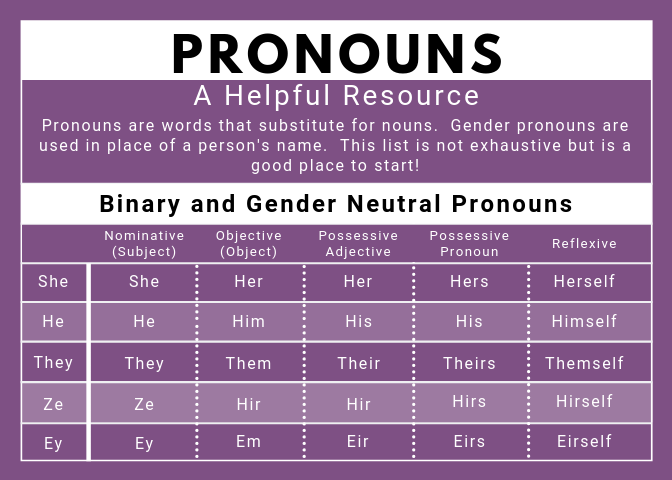WTS-Boston DEI In Motion: Pride Month and Pronouns
Pride Month and Pronouns
WTS-Boston celebrates Lesbian, Gay, Bisexual, Transgender, and Queer (LGBTQ+) Pride Month, which is in June and honors the 1969 Stonewall Uprising in Manhattan. As part of our Diversity, Equity, and Inclusion goals, WTS-Boston is committed to using gender-inclusive and non-sexist language that affirms and respects how people describe, express, and experience their gender. For example, we encourage members to share their gender pronouns and names with WTS-Boston leadership and on their name tags at events if they are comfortable.
Below is a refresher on gender pronouns and how to support your LBGTQ+ colleagues.
What is a pronoun and what are gender pronouns?
A pronoun is a word that refers to either the people talking (I or you) or someone or something that is being talked about (e.g., she, it, them, this). Gender pronouns are the pronouns that we use to refer to people in sentences and conversation as a substitute for a person’s name, like he, she, they, ze, hir, etc. Gender pronouns are the pronouns that a person chooses to use for themselves. Some people don’t use gender pronouns and use their name instead.
Gender pronouns can look like and are not limited to:

Why do gender pronouns matter?
You can’t always know what someone’s pronouns are based on their name or appearance and when someone is referred to with the wrong pronoun, it can make them feel disrespected, invalidated, dismissed, alienated, or dysphoric (often all the above). Gender pronouns matter because they represent how someone identifies and when used correctly, shows respect for someone’s gender identity and creates an inclusive environment. Asking for, remembering, and using someone's gender pronouns is one of the most basic ways to show your respect, just like using someone’s name is.
How do I ask someone what their pronouns are?
When meeting someone for the first time, you can share your own pronouns and ask if they are comfortable sharing theirs: “I’m Katie, my pronouns are she/they. What’s your name and pronouns if you’re comfortable sharing?” Here are some other ways to ask someone what their pronouns are:
- “What gender pronouns should I use to refer to you?”
- “I don't want to make any assumptions, so what gender pronouns do you use?”
- “How should I refer to you in conversations?”
- “Can you remind me of which pronouns you like for yourself?”
How can I support my LGBTQ+ colleagues?
- Don’t assume someone’s gender based on their name or appearance, as these assumptions are not always correct and are based on gender expectations or stereotypes.
- Share your pronouns in introductions and ask if people are comfortable sharing theirs.
- Adding your pronouns to your email signature and encouraging your colleagues to add pronouns to their email signatures too.
Resources adapted from “The Gender Unicorn” via transstudent.org and “Resources on Personal Pronouns” via mypronouns.org.
Links to Resources on Pronouns:
- “Gender Unicorn,” Trans Student Educational Resources (TSER): https://transstudent.org/gender/
- “Gender Pronouns,” Lesbian, Gay, Bisexual, Transgender, Queer Plus (LGBTQ+) Resource Center: https://uwm.edu/lgbtrc/support/gender-pronouns/
- “Gender Pronouns Are Changing. It’s Exhilarating,” New York Times (September 21, 2021): https://www.nytimes.com/2021/09/21/opinion/gender-pronouns-they.html
- “It’s Time for ‘They’,” New York Times (July 10, 2019): https://www.nytimes.com/2019/07/10/opinion/pronoun-they-gender.html
- “Pronouns & Inclusive Language,” Lesbian, Gay, Bisexual, Transgender, Queer, Intersex, Asexual (LGBTQIA) Resource Center: https://lgbtqia.ucdavis.edu/educated/pronouns-inclusive-language
- “Resources on Personal Pronouns,“ MyPronouns.org: https://pronouns.org/
- “Resources: Tools for equality and inclusion,” Human Rights Campaign: https://www.hrc.org/resources